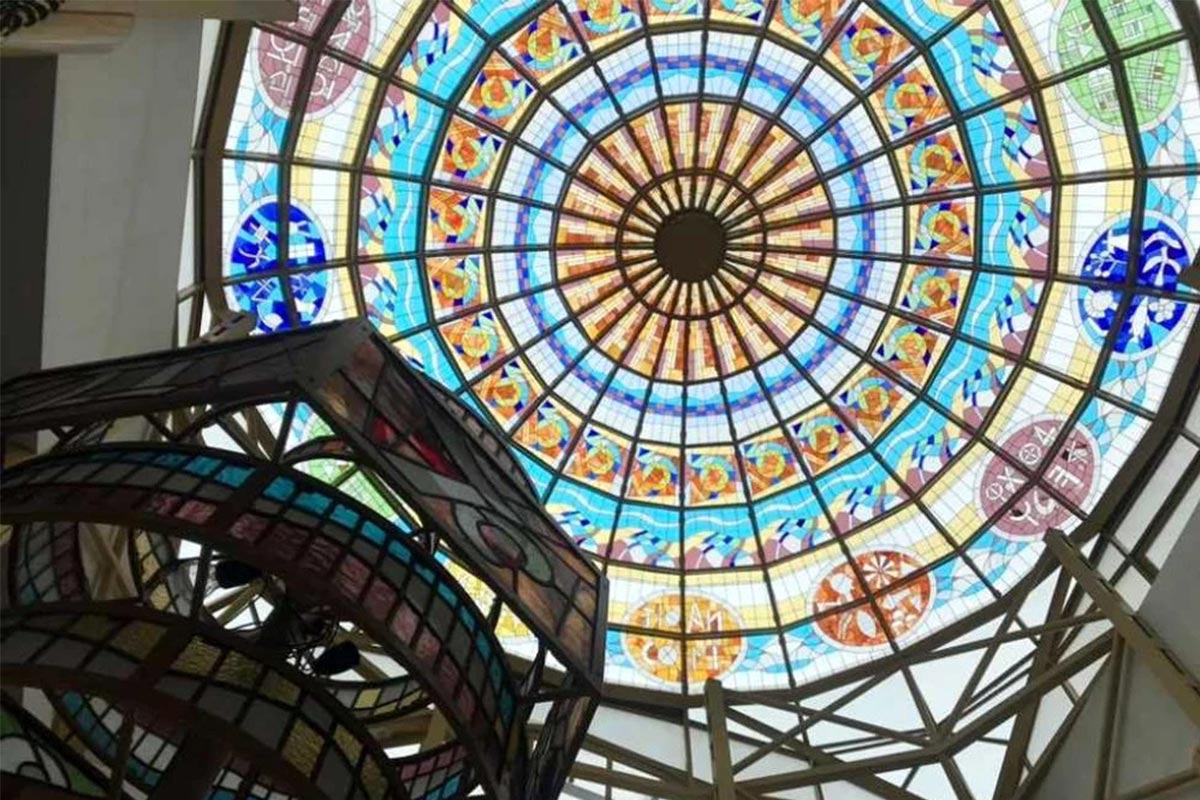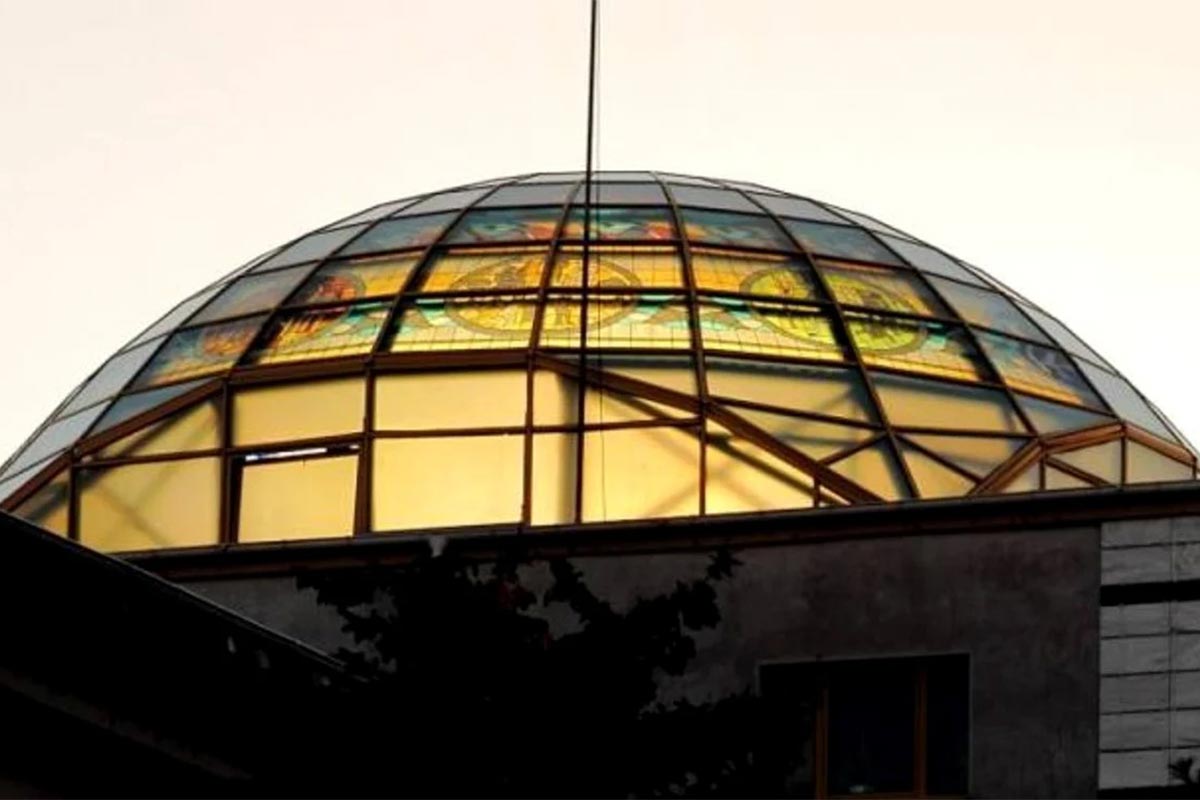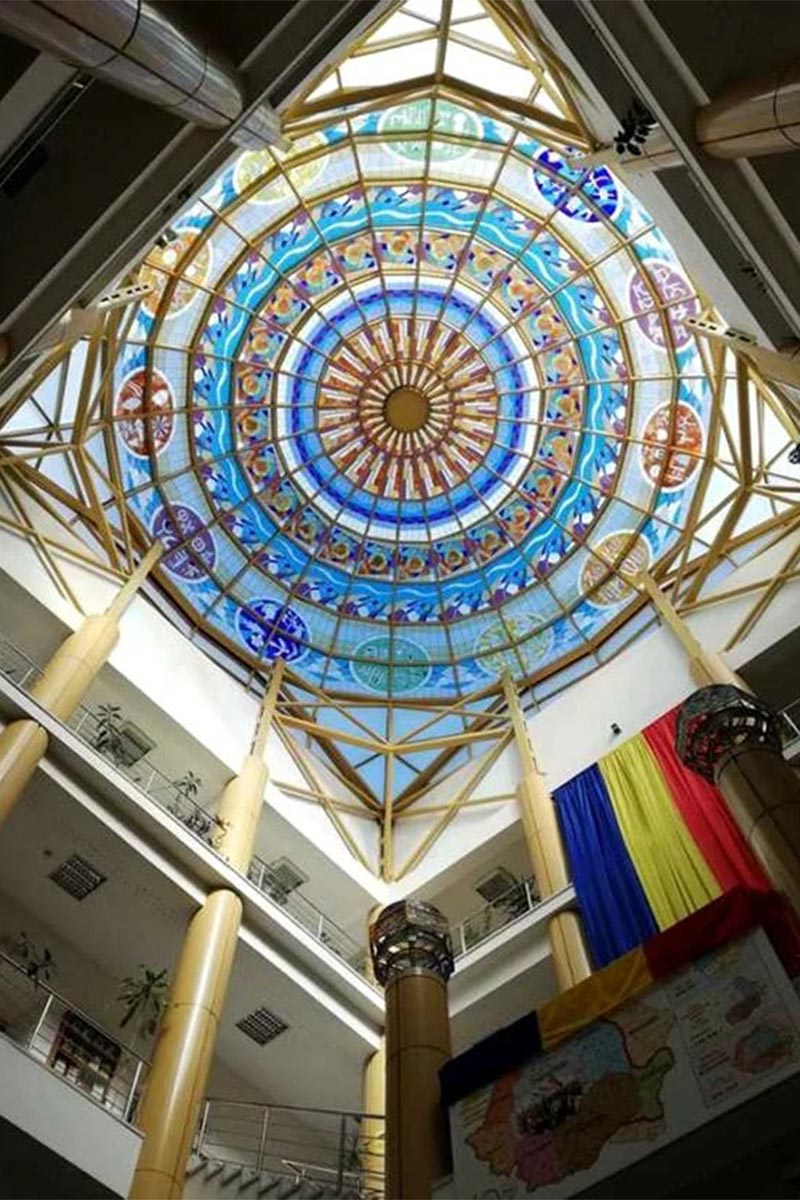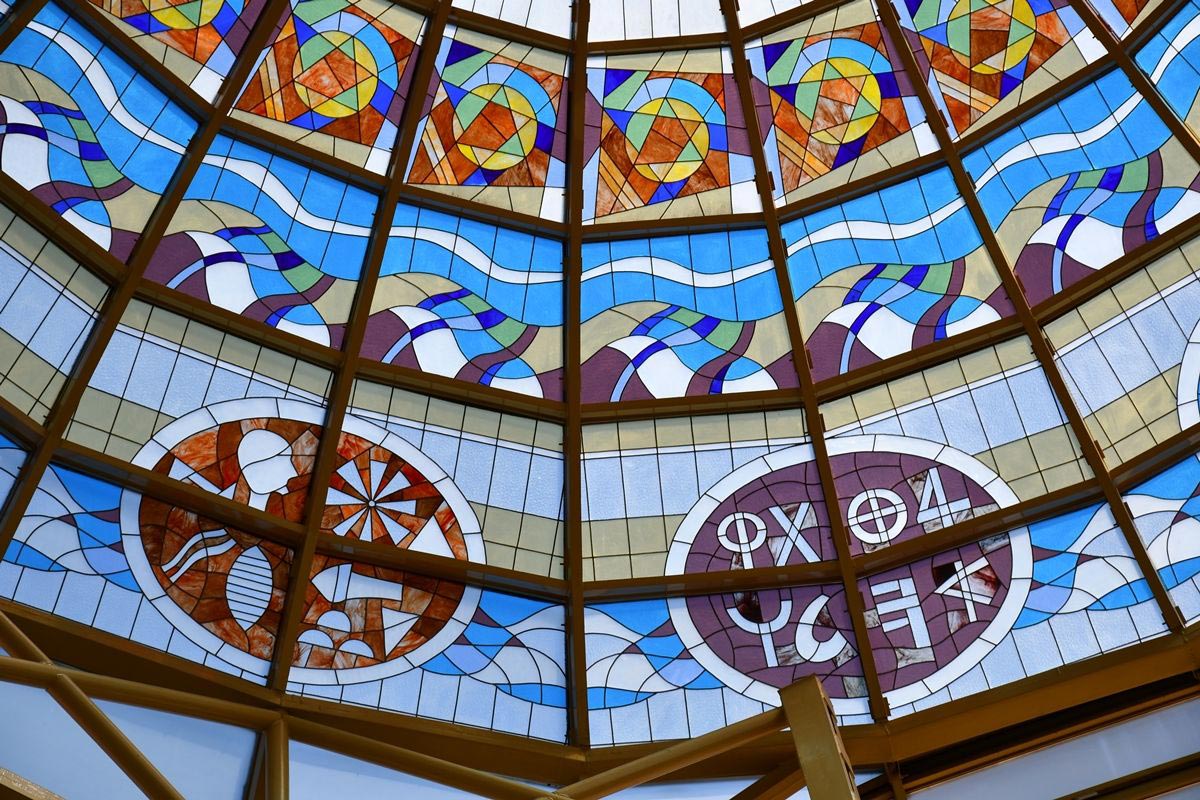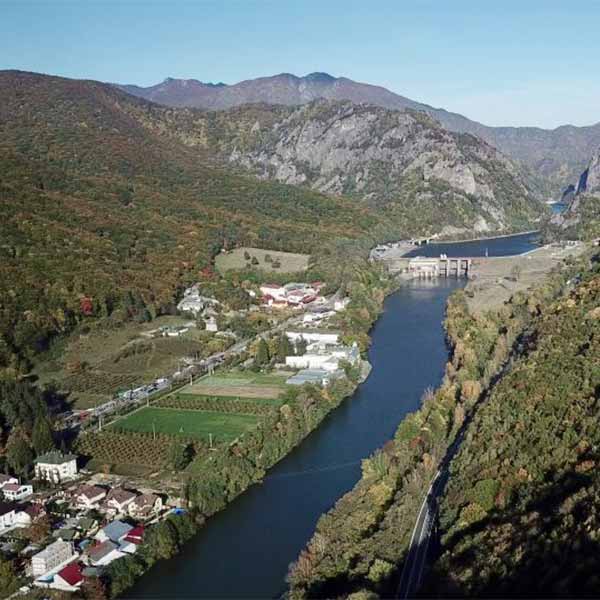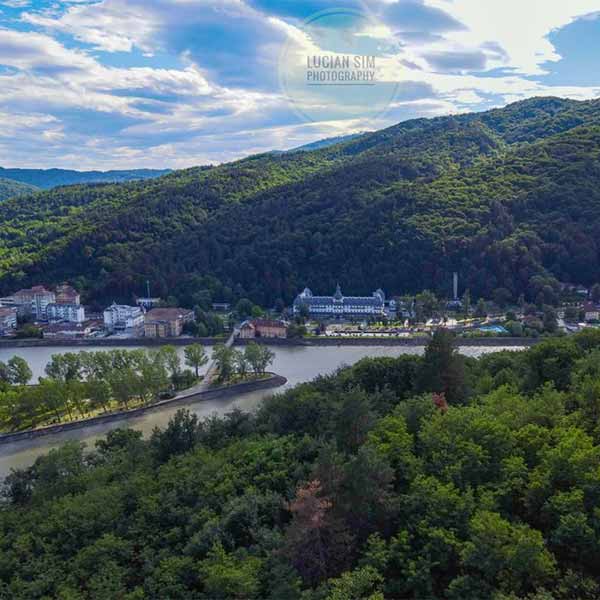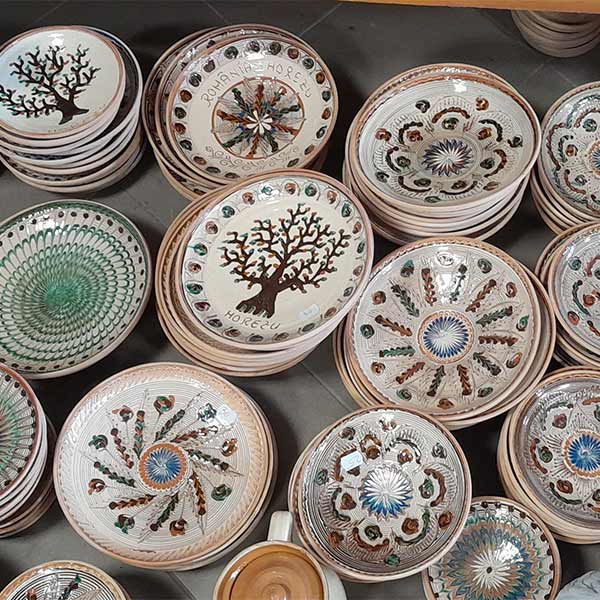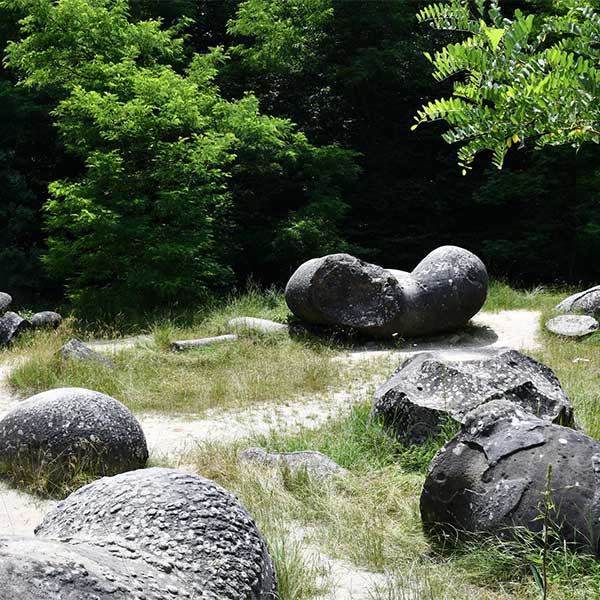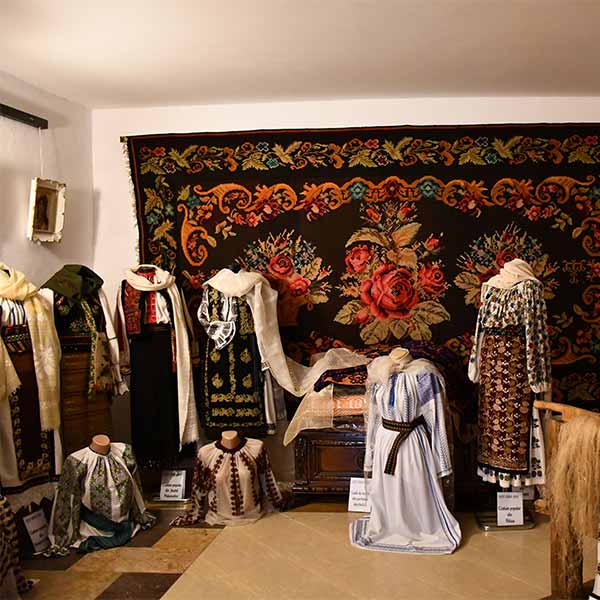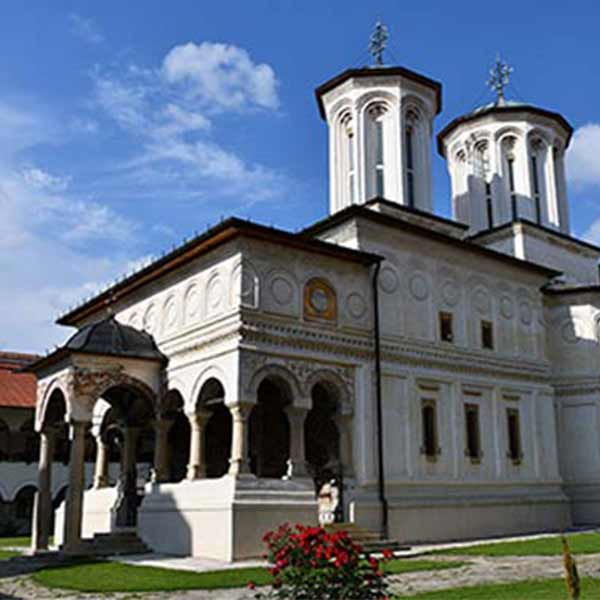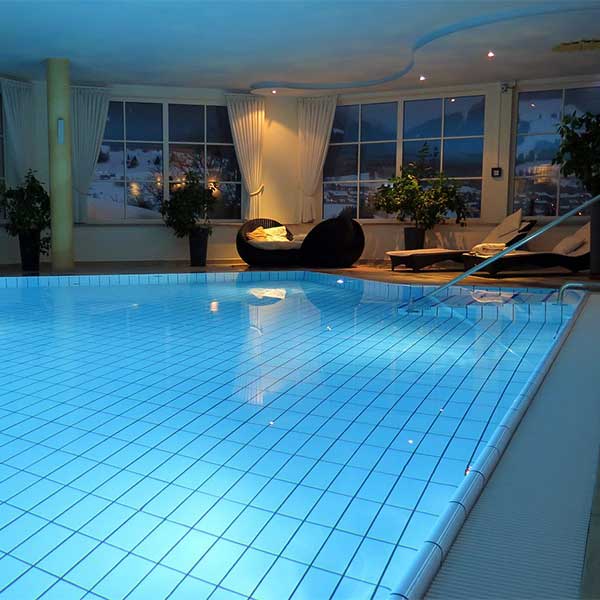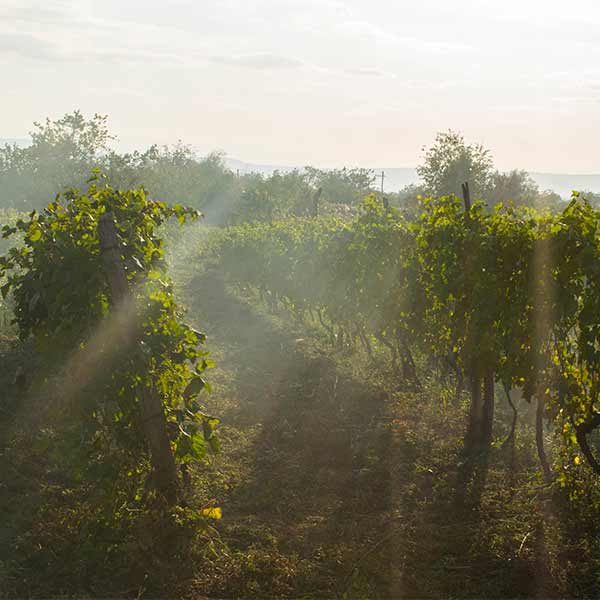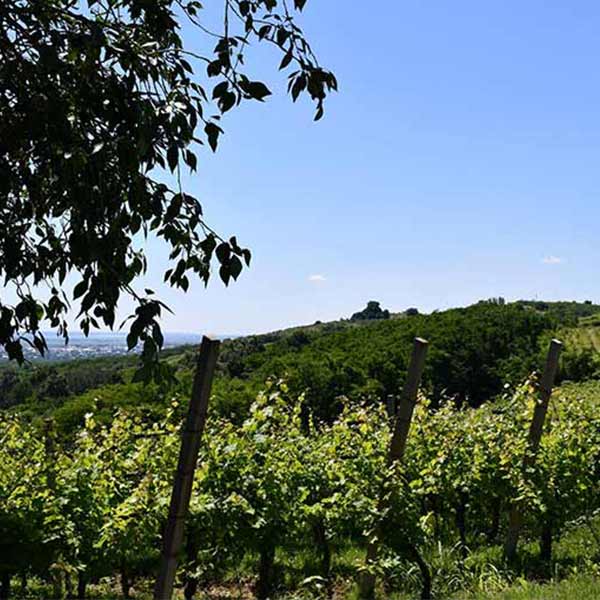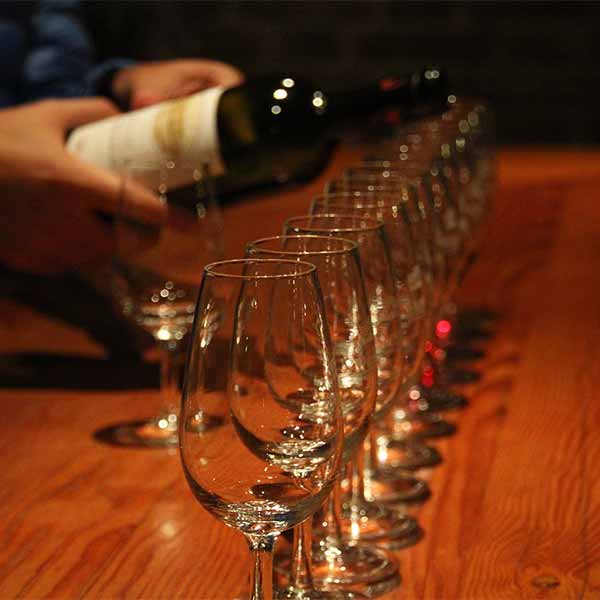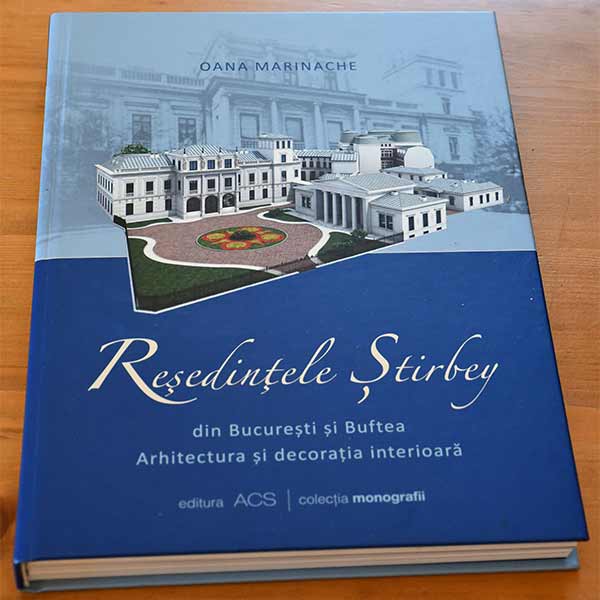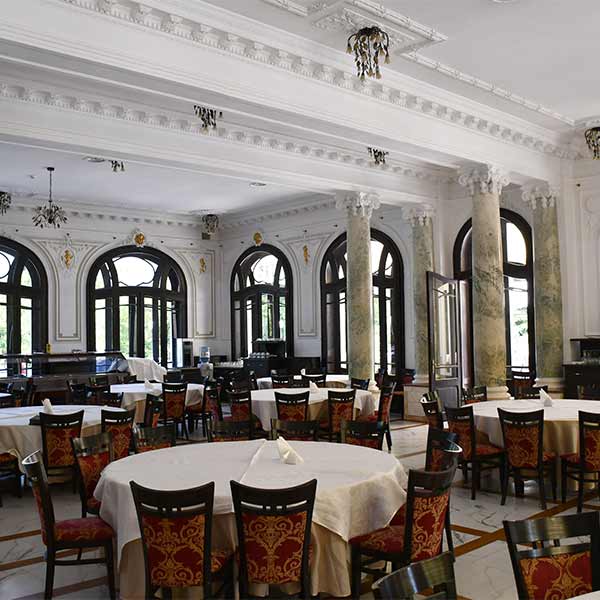
The stained glass dome of the “Antim Ivireanul” County Library
The stained glass dome of the “Antim Ivireanul” County Library
The work consists of 168 stained glass modules, handmade in 2005, with lead reinforcement, in the stained glass technique. The approval procedure began several years ago.
It is a work by the Romanian artist Gheorghe Dican, vice-president of the Union of Fine Artists of Romania. The stained-glass dome covers an area of about 150 square metres and depicts the “Making of the World”. The creation stands about 30 metres above the base of the building.
| Schedule: | |
|---|---|
| Monday to Friday | 9:00 – 19:00 |
| Saturday – Sunday | Closed |
The stained glass dome of the County Library in Râmnicu-Vâlcea, designed by Romanian artist Gheorghe Dican, has been named the largest stained glass dome in the world. The record – “Largest stained glass dome: The Ramnicu Valcea County Library” – was published on the website of the World Record Academy, the largest organisation that verifies and homologates world records, on Wednesday, 8 April, and is to be included in the famous Guinness Book of World Records, published by the World Record Academy in the USA, as well as in the Romanian edition, which will appear next year.
The record – “Largest stained glass dome: The Ramnicu Valcea County Library” – was published on the World Record Academy’s website on Wednesday 8 April and will be included in the famous Guinness Book of World Records, published by the World Record Academy in the USA, as well as in the Romanian edition, which will be published next year.
It is a work by the Romanian artist Gheorghe Dican, vice-president of the Union of Fine Artists of Romania. The stained-glass dome covers an area of about 150 square metres and depicts the “Making of the World”. The creation stands about 30 metres above the base of the building.
“It’s a boundless joy. I never thought… When there was talk about the Guinness Book of Records (after the work was completed it was proposed that the work be included in the Guinness Book – ed.) there was more talk in the press, I was not the one who initiated the idea. It was others who saw the work, who took care of the thing. It was unlikely that in 2005, when it was done, there would be another fool doing a work on the public domain in such an old technique combined with something new. It was unlikely that anyone would risk such a work in direct relation with nature, because on this stained glass window it snows, it rains… Never since the stained glass technique was discovered has stained glass been used in such a situation. It is generally vertical, as a window, a skylight, in the great cathedrals, or has a skylight above it, through which the water runs. It is the largest stained glass window in Romania and possibly the largest in the world on this type of technical solution, i.e. as a roof. Although the building itself is a clone of the library in Pitesti, all of us who were involved modified the project a little – in the sense that we increased the interior size, that big hallway at the entrance, so as not to obstruct the space with a glass ceiling on the second floor. So we went upstairs as a roof and it took on a monumental dimension that gives it grandeur” said artist Gheorghe Dican about his unique creation.
The stained-glass window is composed of 12 ovals, with 12 compositions illustrating the main types of writing known so far, from Tatar, cuneiform, Phoenician, hieroglyphic, to Persian, Cyrillic, Demotic and others. “The two light fixtures are composed in the shape of the globe with medians and parallels, this is what the lower part looks like. The upper part of the globe symbolizes the solar motif. The first manifestations of the Divine Creation: air, fire, earth and water form the basis of the work”
The artist Gheorghe Dican admitted at the time: “It was also the madness of the unknown, because I didn’t realise from the beginning what technical problems I would face”.
The current county library in Valcea is mostly an architectural clone of the county library in Arges. The dome – stained-glass window, however, makes it stand out. The story began in 2005, when the painter Gheorghe Dican came up with the crazy idea of transforming the stained-glass window, which can also be found in Pitesti, but in the form of a ceiling, into a dome. His idea did not catch on immediately. In the sense that although the authorities in Val d’Aosta were delighted with the initiative, the architects, as in the case of the library in Pitesti, initially rejected the idea.
It was a Sisyphean task, not just to produce the stained-glass window itself, but above all to persuade people who had never before faced such challenges.
What is certain is that after the architects heard about the “crazy” idea of the artist from Valles, they immediately called the designer to their home: “After convincing the architect, they phoned the director of the Design Institute in Pitesti. When he arrived, they told him: ‘Mr Director, we have designed the intermediate dome, but you should know that we have an even better idea’. That’s exactly what he said.”
The brand not recognised by the Romanian authorities, included in France’s tourism routes
Even though it was said from the beginning that it was a work for the Book of Records, it was only a few years ago that the procedures for its approval were started. However, despite being a county brand, it has never been officially recognised by the authorities. Until now. In other words, it is not included in any public tourism strategy.
Who is the author of the new world record
Gheorghe Dican was born 59 years ago in Cernișoara – Vâlcea. He is president of the Vâlcea branch of the Union of Fine Artists (UAP) and national vice-president of the same structure. He is a member of the team of the Art Museum “Casa Simian” Vâlcea and also teaches museum education courses “The little big painter” to children from all over the county in the same institution. He is also an expert in goods with artistic significance – modern Romanian art at the newest Vikart Auction House. Gheorghe Dican’s works can be found in private collections on all continents, as well as in the collections of the Ministry of Culture, museums in the country, the Parliament and the State Protocol Regie.
The dome-shaped stained-glass window in Râmnicu Vâlcea covers an area of 142 square metres. It consists of 12 ovals with 12 compositions, illustrating the main types of writing known so far: Tartary, Cuneiform, Phoenician, Hieroglyphic, Persian, Cyrillic, Demotic and others.
Stained-glass windows have existed all over the world for at least a millennium. Their origins are lost in history. The technique used to create stained glass is thought to have been borrowed, most likely from jewel and mosaic makers.
